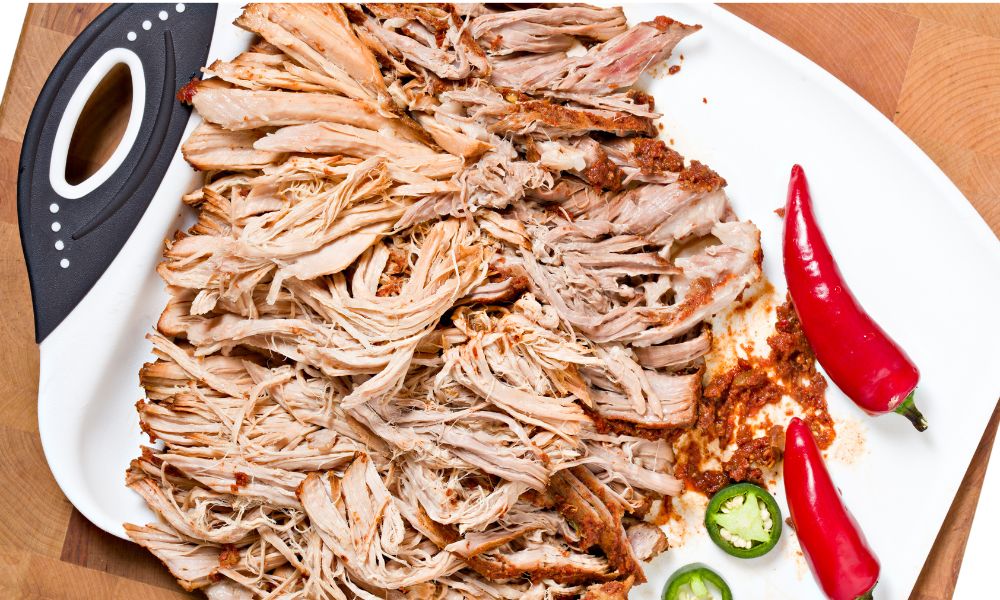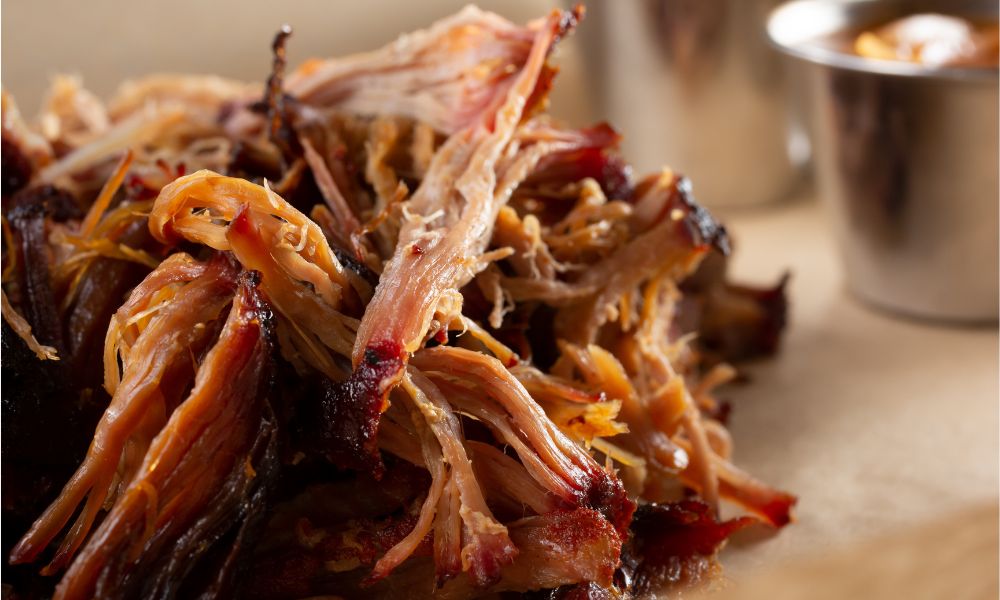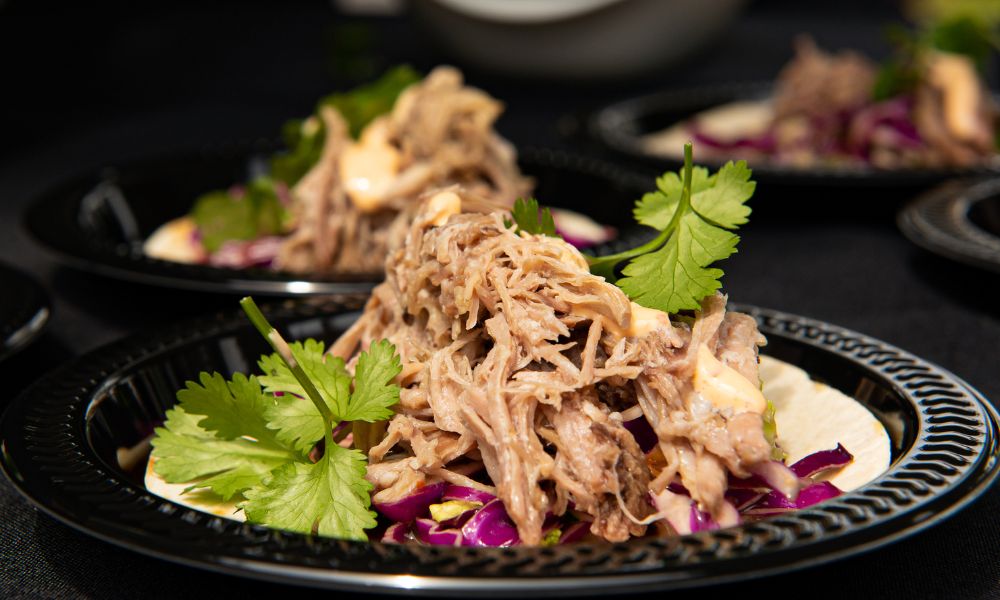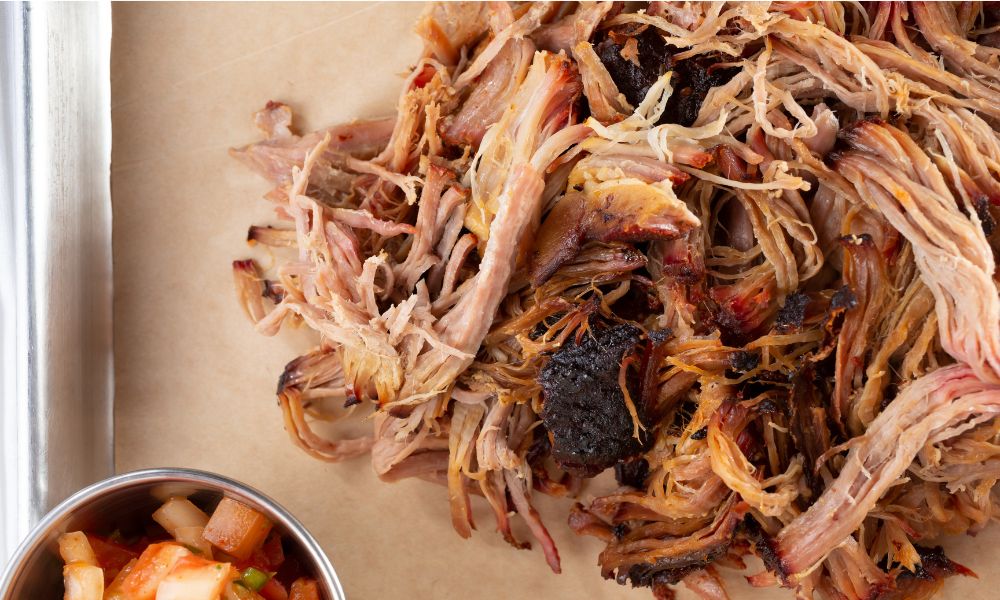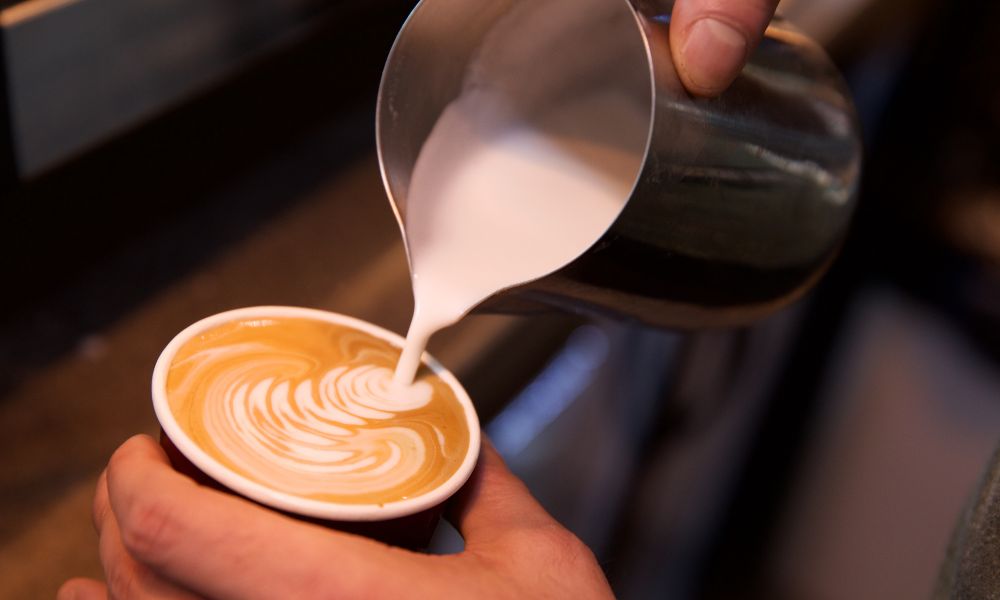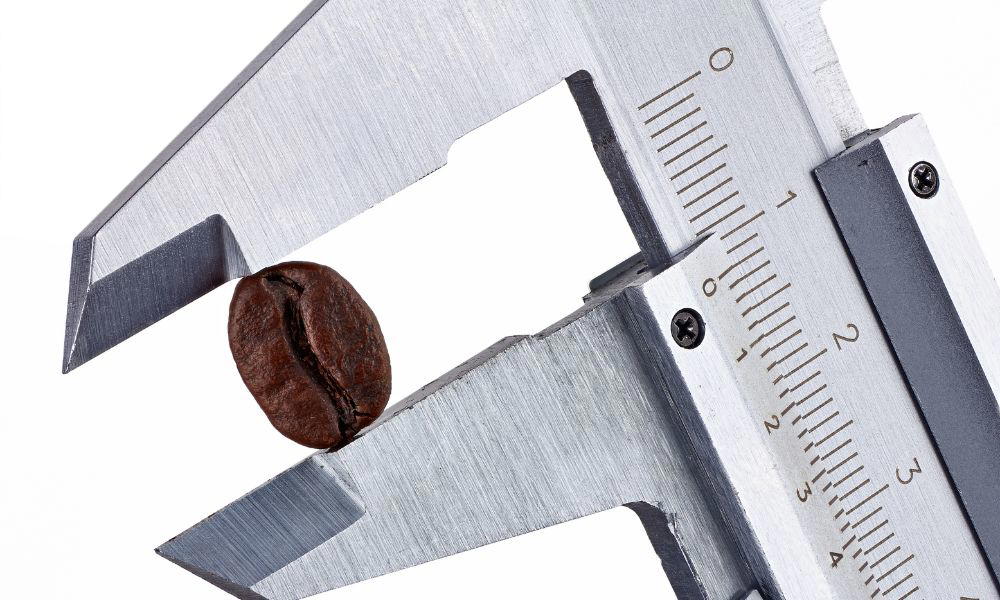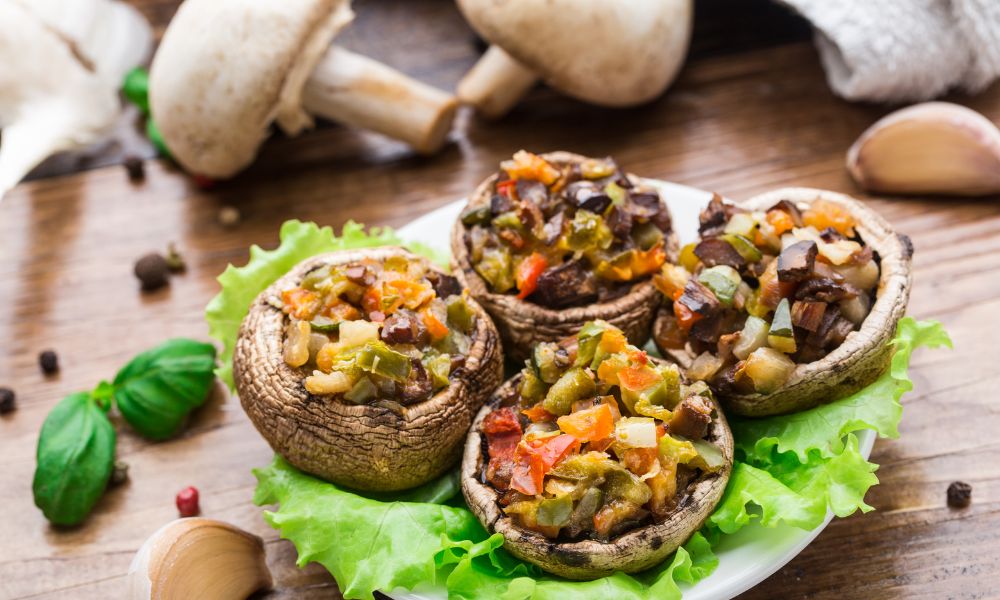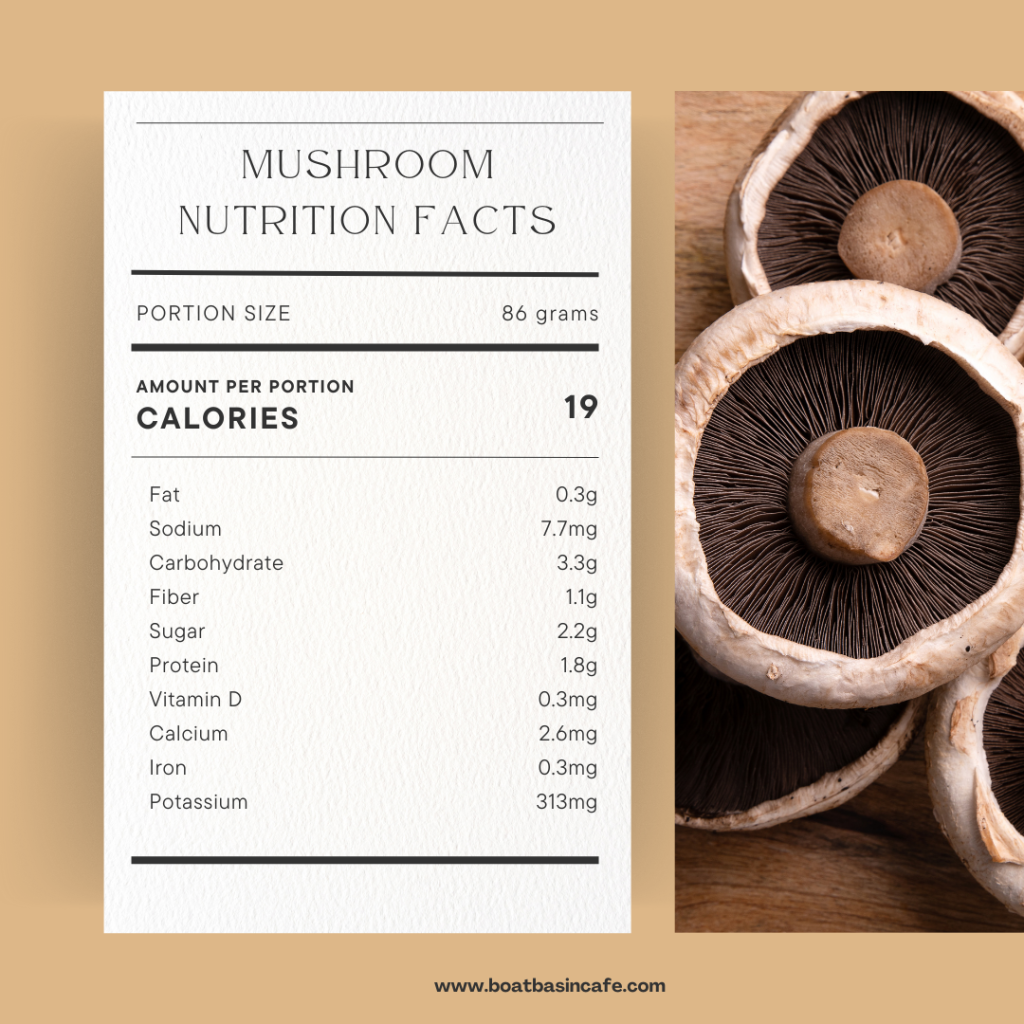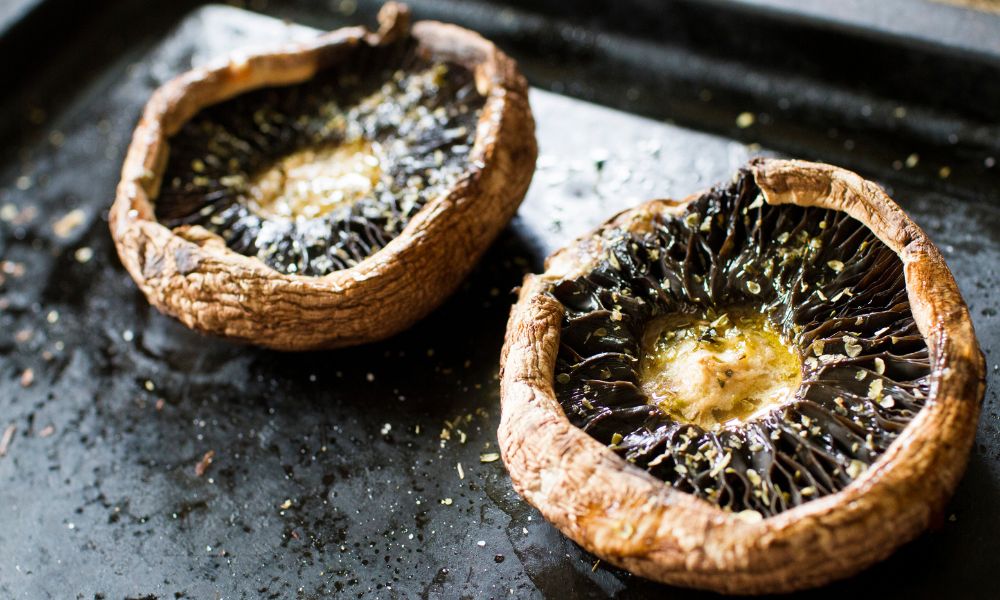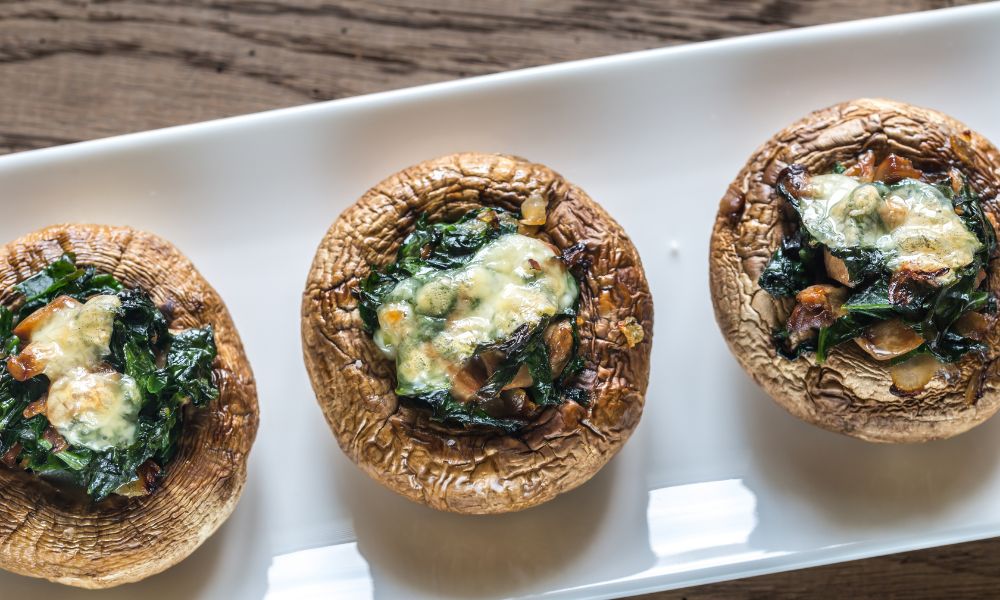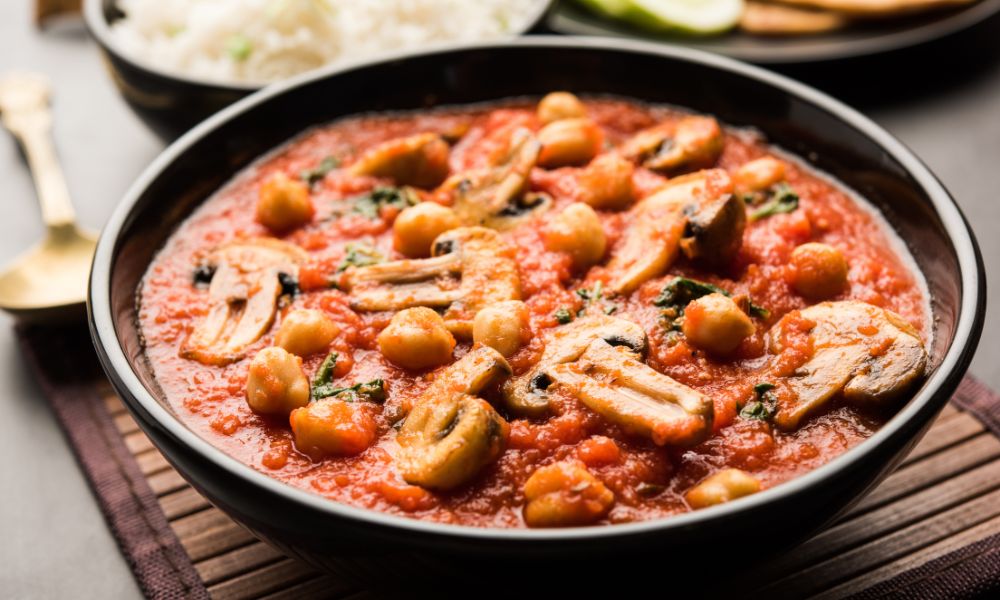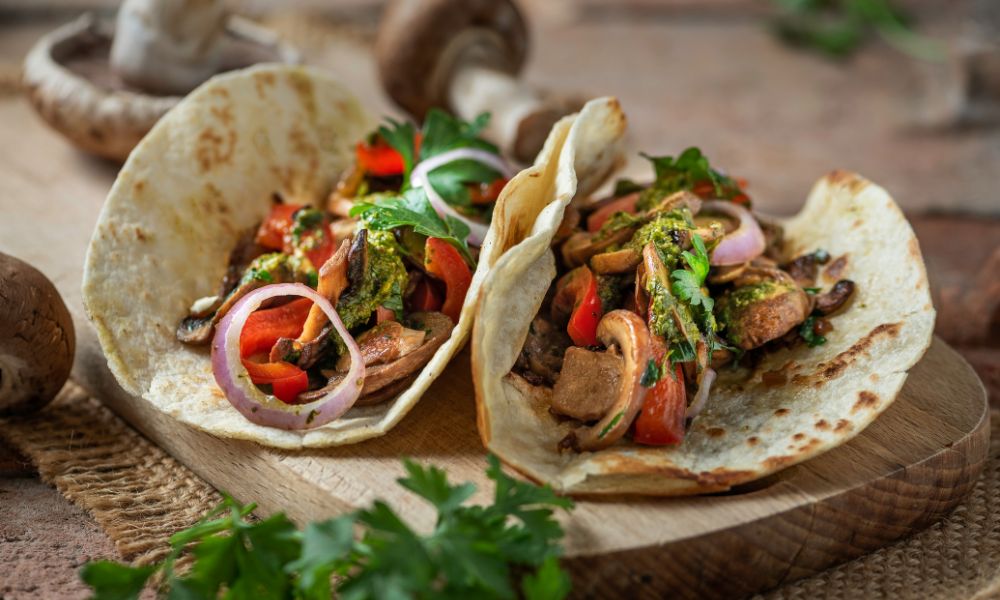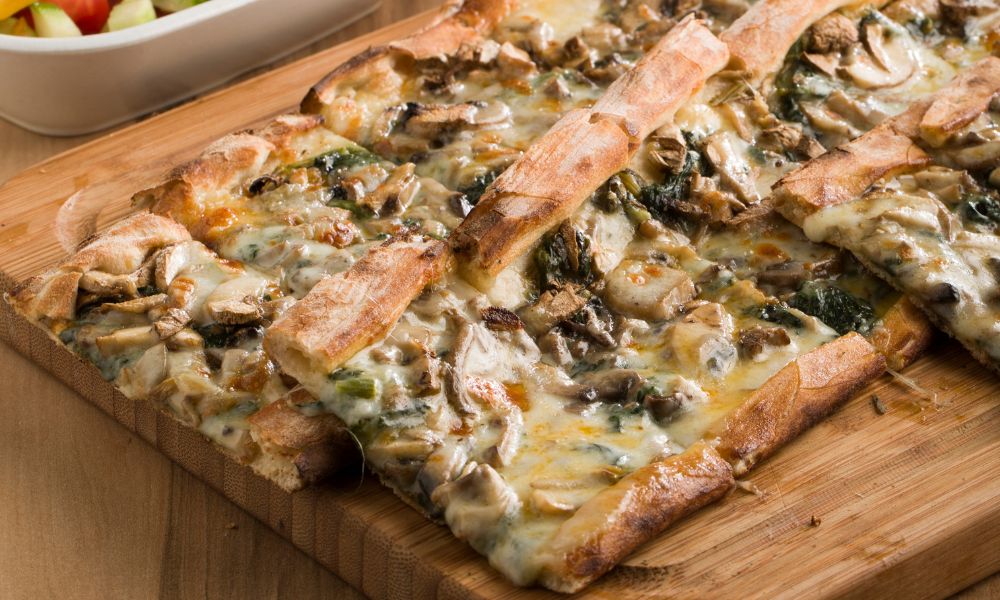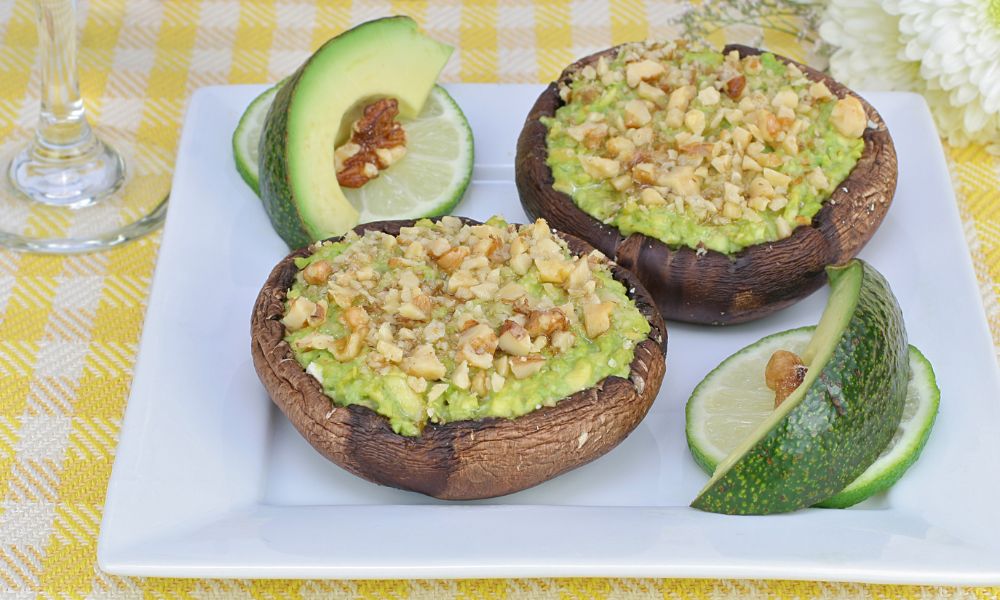Kanikama sushi is popular, but what exactly is it? To know everything about kanikama and its various uses in recipes, read our article today.
What is a Spicy Crab Roll?
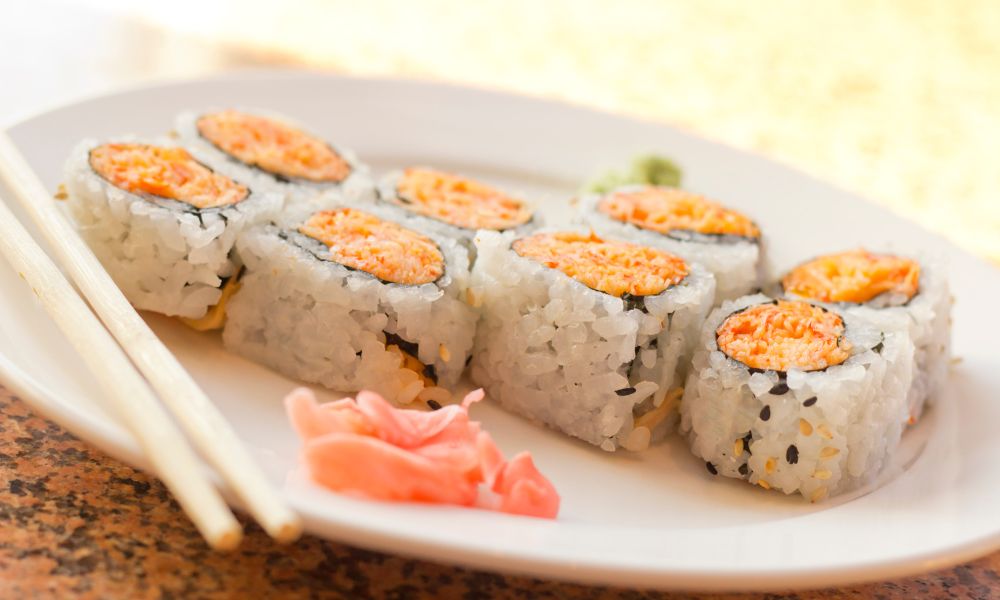
A spicy crab roll is one of the most popular Japanese sushi roll types there. The overall taste is creamy, spicy, and satisfying! They’re quite simple to make. A spicy kani sushi roll features the imitation crab as its central ingredient, along with sriracha spicy mayo sauce, nori or seaweed sheets, sushi rice, sushi vinegar, and sesame seeds.
What is Kanikama?
Kanikama, more commonly known as kani, are sticks of imitation crab made from something called surimi. Surimi is a paste made from ground varieties of fish to make the imitation crab meat taste!
Imitation crab meat is distinctive for its bright red or orange color. It’s also quite smooth, in comparison to real crab meat, which has ridges and striations.
What is the Nutritional Value of Kanikama?
Kanikama is a good snack you can have at any time! Between real crab meat and imitation crab, real crab has more nutrients and is packed with more protein. Imitation crab meat is less nutrient-dense.
As a result, as highly processed meat, imitation crab is best taken in moderation. There are also additives you might want to avoid in general!
Types of Imitation Crab Meat
- Crab Sticks
A crab stick is the most common shape that kani crab meat can come in. They look like sticks or sausages, tinted red to imitate real crab.
- Shredded Crab Meat
Shredded crab meat can be used in salads, tacos, and crab cakes. Kani crab meat is a little bit rarer to find, but it’s there nevertheless!
- Flake-Style or Chunky Crab Meat
If you’re looking for pizza toppings, or something to use in stir fries, chunky crab can be used as well!
If you’re in a pinch, you can also look for canned real crab meat. Canned crab meat is also a great way to do all these dishes — you can even get fresh crab meat, too! Kanikama can be your substitute instead.
Is Kanikama Bad For You?
Kanikama isn’t bad for you per se, but it can be a bit too much if you don’t moderate your servings. It’s still processed food and additives are included, so you don’t want to eat too much.
How to Make Kanikama Sushi or Nigiri
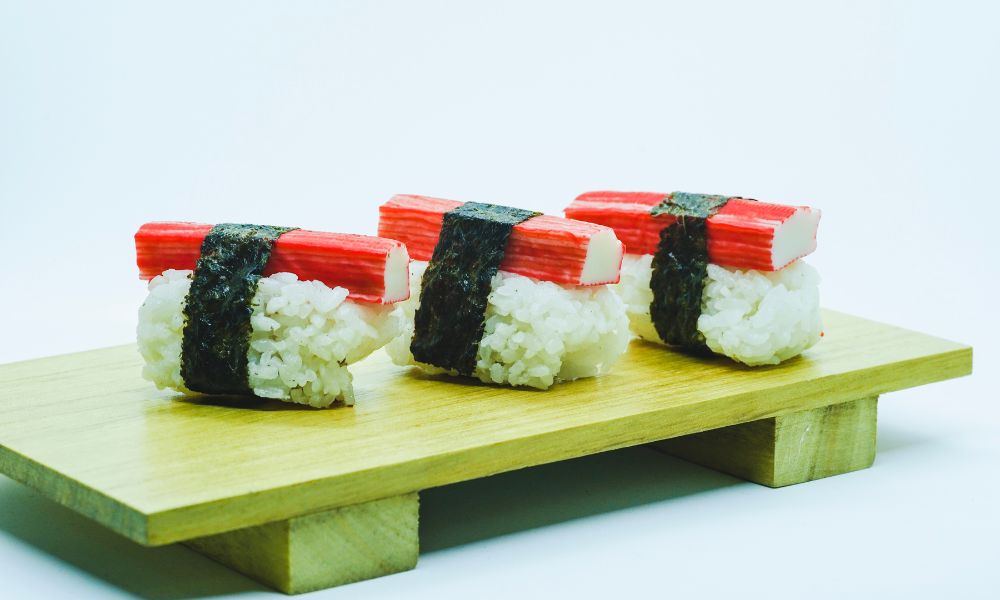
What You Will Need:
- Sushi rice
- Water
- Vinegar for sushi
- Kanikama sticks
- Nori seaweed sheets
The Kani Sushi Recipe:
- Make the sushi rice. Wash the rice, add it to the rice cooker, and let it cook for up to twenty minutes. Once cooked, let it cool — then stir in the vinegar.
- Shape the rice. You want your sushi rice to be oval-shaped and uniform. As the rice is sticky, you can dip your hands in vinegar before forming them in uniform pieces.
- Get the kanikama sticks. Cut each stick into smaller pieces.
- Start making the nigiri. Press each small kanikama stick to each oval-shaped rice. You can even use a small portion of wasabi to “glue” each kanikama stick to the rice!
- Serve. Use shoyu, pickled ginger and wasabi on the side. Congrats, you have kani sushi!
How to Make Kani Maki

What You Will Need:
- A bamboo mat
- Japanese short-grain sushi rice
- Sushi vinegar or a rice vinegar mixture
- Shredded crab sticks
- Mayonnaise
- Pickled ginger, shoyu, and wasabi
- Nori seaweed sheets
The Kani Maki Recipe:
- Cook sushi rice. Measure and rinse out the rice. Add water before making a seasoned rice vinegar mixture. Once cooked, transfer the rice to a large bowl before pouring in the seasoned rice vinegar.
- Prepare the nori seaweed sheets. Place the nori seaweed sheets on the bamboo mat, rough side up. Start by placing the rice evenly on the nori seaweed sheets.
- Add mayonnaise and cooked crab meat. You can use canned crab meat or kani sticks for this! Spread a thin strip of mayonnaise and crab onto the rice.
- Start rolling the bamboo mat. Firmly roll the kani maki with the bamboo sushi mat halfway.
- Cut the kani maki into rolls. Use a sharp knife! Moisten it with water, trim the ends, and cut the kani maki right in the middle. Cut each half of the Japanese sushi roll into three equal parts.
How to Make Spicy Crab Rolls
Spicy crab rolls are quite straightforward to make! Here, we have a guide to make the best possible sushi roll with spicy crab:
Ingredients for a Good Spicy Crab Roll:
Kani Sticks
As mentioned above, kani sticks are the essential feature of any good spicy kani roll. For a sushi roll, you’re going to use around around a packet or two of kani.
Sushi Rice
Sushi rice is Japanese, short-grain rice, also known as Japonica or shari rice. There’s a certain preparation needed before you can use the sushi rice in a sushi roll, which we’ll get into later in the recipe!
Sushi Vinegar
Sushi vinegar is ideal, but in a pinch, you can mix together certain ingredients to make your own sushi vinegar! Rice vinegar, sugar, and salt is enough to make your own homemade sushi vinegar.
Nori Sheet
Nori is dried edible seaweed. Nori seaweed sheets are thin and paper-like, so they must be crispy enough to break into half.
Sesame Seeds
Both white and black sesame seeds can be used for this sushi roll recipe! Ideally, you can also toast the sesame seeds for a few minutes in the frying pan.
Mayonnaise
Looking for creaminess? Mayonnaise is your best bet for the spicy kani roll. Japanese mayonnaise is better than most other mayo products. If you want a healthier version of the spicy kani roll, you can substitute plain Greek yogurt.
Sriracha
Sriracha adds heat to the spicy crab roll. If you want to make your own sriracha sauce, you can do so: just add chili, vinegar, garlic, and salt together in a bowl!
How to Make A Spicy Crab Roll or Spicy Kani Roll
Aside from the ingredients, a sushi bamboo mat is also necessary. Have you got everything? Let’s get started!
Make the sushi rice
To begin making a spicy kani roll, you have to start with sushi rice. Cook the sushi rice like you normally would with other kinds of rice! Start by washing it thoroughly. With sushi rice, rinse it around three times before settling on a 1:1 ratio.
Use a rice cooker for convenience! If you don’t have a rice cooker, a pot is enough.
Wait for twenty minutes for the rice to cook. Transfer it to a large bowl and leave it to cool. Once cool, stir in the sushi vinegar before mixing it well.
Make a crab salad
Prepare a mixing bowl. Shred the imitation crab stick into the bowl, before adding the sriracha spicy mayo sauce.
Cut the nori sheet
Use kitchen scissors to cut the nori sheet in half. Now that you have two halves, place half of the nori sheet on the bamboo mat. The shiny side should be facing down.
Spread the seasoned sushi rice and crab salad
Measure around 3/4 cups of seasoned sushi rice and crab salad, then spread it over the nori sheet evenly. Sprinkle sesame seeds on top of the nori seaweed.
Roll, roll, roll
Now, it’s time to roll spicy crab, rice, and nori seaweed sheets together. Lift the edge of the bamboo mat, over the filling, and start rolling! Roll spicy crab until the ends meet.
Cut each roll to serve
Congrats, you’re nearly done with the sushi roll! Now, all you have to do is free it from the bamboo mat and cut it in eight pieces. You can drizzle the spicy sriracha mayo onto it as well.
Is a Spicy Crab Roll Cooked or Raw?
A spicy kani roll sushi has raw ingredients, but the sushi rice in itself is cooked.
Tips on Making This Spicy Crab Roll Recipe
Use Tezu Water
Sushi rice can get a little sticky when making a spicy crab roll. When making spicy kani rolls, dip your hands in a bit of Tezu water to help with the stickiness. If you want to make Tezu water on your own, you can make it with 1/4 cup of water and two teaspoons rice vinegar.
Adjust the Sriracha Spicy Mayo Sauce
The spicy mayo is what makes your spicy kani sushi roll creamy — and packed with a lot of heat. Sriracha mayo is best adjusted to your taste with any spicy crab roll. It’s what makes each roll spicy, so make sure you use just enough!
You don’t want the sriracha mayo to be too hot, but you don’t want the spicy sriracha mayo to be too little, either. Adjust the proportions of the spicy crab roll according to your liking!
Use the Bamboo Mat to Firm It Up
To prevent the sushi roll from falling apart, place the mat over the rolls and squeeze gently. If you made your spicy kani maki too loose, this is a good technique to make sure it stays firm!
How to Store Spicy Kani Rolls
Wrap In a Moisture-Proof Paper
Everything about your spicy crab roll should not be spoil. Ideally, you should have moisture-proof paper ready to wrap each spicy crab roll in.
Alternatively, Use Foil or Plastic
If you don’t have moisture-proof paper, foil or plastic wrap is also a good alternative for a spicy crab roll. You can store each spicy crab roll in an airtight container as well. You don’t want anything that promotes bacterial growth or food spoilage.
Store It in The Refrigerator or Freezer
Low temperatures will lead a spicy kani roll to store well. You can store each spicy kani roll for two to four days in the fridge or freezer. Otherwise, you want to serve and eat spicy crab roll up quick — with some shoyu sauce, pickled ginger, and wasabi!
There are some signs of spoilage in a spicy crab roll that you should look out for, namely:
- Odor. An unpleasant odor may emit from a spicy kani roll when it’s spoiled.
- Dull look. There may be changes in color in a spicy crab roll, and the visual presentation of the sushi rolls may end up looking duller. At their worst, the spicy crab roll may become inflicted with mold.
- Slime. The texture will also change with sushi rolls! Feel the texture of the sushi rolls just in case.
What’s the Difference Between California Rolls and Kani Sushi?
A California roll is a popular Japanese sushi roll, with the filling containing avocado, cucumber, crabmeat, and seaweed.
In contrast to kani sushi, a California roll is not wrapped in seaweed. Instead, it’s an inside-out roll that you can sprinkle sesame seeds onto. However, a California roll can also use tobiko or masago — or flying fish roe and capelin roe, respectively.
A California roll is one of the most popular Japanese sushi rolls out there. Due to its global popularity, it’s often credited to be one of the dishes that open the gates of non-traditional fusion cuisine.
One thing a California roll and kani maki can have in common is the spicy mayo. You can add more spicy mayo sauce to a spicy California roll to make it tastier!
What Else Can You Do with Crab Sticks?
Have leftover crabmeat, but don’t want to make another spicy crab roll? Take a few tips from any Japanese restaurant and get the following:
Spicy Kani Crab Salad
Ingredients:
- Kani
- Cucumber
- Carrots
- Mango
- Japanese mayo
- Lemon
- Soy sauce
- Salt and pepper
The Recipe:
- Make the dressing. Whisk together the mayonnaise, lemon juice, soy sauce, and salt and pepper. You can also grate some lemon zest onto the dressing.
- Peel and cut the cucumbers, carrots, and mangoes. Cut the cucumbers, carrots, and mangoes into thin strips. As much as possible, you want the cucumbers to be free of seeds.
- Shred the crabmeat. As much as possible, you also want the crabmeat to be in thin strips.
- Toss all the ingredients together. Mix the cucumbers, carrots, mangoes, and crabmeat together.
- Pour the dressing. After you’ve mixed everything together, you can pour the dressing you made earlier over the entirety of the salad.
- Serve. It’s best with some lettuce sleeves, grilled chicken, or some salmon!
- Make it spicy. This is an optional step, but you can choose to make spicy crab salad or spicy kani salad! Use some sriracha sauce and mix it in with some mayo. The sriracha sauce will give your salad the jolt of spiciness it needs while the mayo will allow for some creaminess — just like the crab roll recipe we discussed above.
Spicy Crunchy Tempura Crab Roll
Looking for more crunch and texture in your spicy kani roll dish? Instead of a simple spicy kani roll, make it into a crunchy tempura crab roll instead! Follow our recipe below:
Ingredients:
- Cooked sushi rice
- Nori sheets
- Tonkatsu, ponzu, tamari or soy sauce
- Shrimp tempura
- Panko bread crumbs
- Avocado
- Olive oil
- Sriracha sauce
The Recipe:
- Cook the sushi rice. Rinse the rice thrice and put it in a cooker or pot on low heat. Stir in vinegar once it’s cooked!
- Cook the tempura. You can bake it in a preheated oven at around 450 degrees Fahrenheit or 250 degrees Celsius.
- Cook the panko toppings. Cook the panko toppings until it’s golden brown!
- Assemble the sushi. Get the bamboo mat, and place the nori sheet rough side up. Place the shrimp tempura, crabmeat, and avocado on the nori sheet, along with the rice.
- Roll spicy crab-tempura roll in panko bread crumbs. Once it’s all done, you can cut the crab-tempura rolls and roll them in the panko bread crumbs.
Kani Salad Rolls
Tired of eating spicy kani maki, or want to up your kani sushi recipe? Easy enough. If you don’t feel like eating a spicy kani salad, make kani salad rolls instead!
Ingredients:
- Cucumber
- Crabmeat sticks
- Japanese mayo
- Salt
- Vietnamese rice paper
- Lettuce
- Mango
The Recipe:
- Cut up the cucumber strips and crabmeat. After you shred the crabmeat and cut up the cucumber strips, squeeze the cucumber to get rid of the excess water. This kani roll also has mango, so make sure to cut it up into strips as well!
- Combine ingredients in a bowl. For this kani roll, combine the crabmeat, Japanese mayo, mangoes, and cucumbers. Mix it all together in one bowl.
- Start using the rice paper. Soften a piece of rice paper with water. This kani roll in particular uses Vietnamese rice paper! Use a spoon to place a portion of crabmeat mixture onto the lettuce leaf. To make the kani roll, roll the rice paper tightly together.
- Arrange and serve. Serve the kani roll on a serving platter with some Japanese mayo on the side. Dip each kani roll into the mayo before eating it!
Store the dishes in an airtight container, in a plastic wrap, or in aluminum foil.
Frequently Asked Questions
What does kanikama taste like?
Kanikama tastes a lot like crab! It’s sweet, savory, and salty at the same time. Take a bite of a kani crab stick and see the taste for yourself.
What meat is kanikama?
A kani crab stick or canned kani meat is made of raw fish! Varieties of raw fish are involved in making the paste used for the kanikama itself.
Is kanikama real meat?
Yes, it is, but it’s not real crab — while there’s real kani meat out there, kanikama substitutes kani crab meat. Instead, it’s made of fish with some additives to it.
